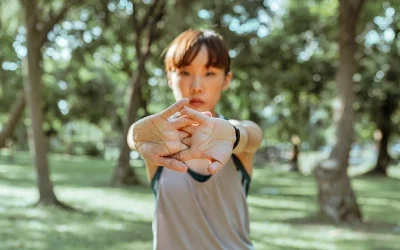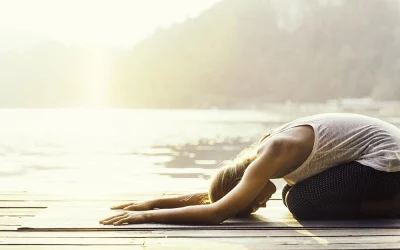As I sat down to write this blog, I got to thinking about our relationship to sports and stretching for sports. When I was younger, I used to be a competitive swimmer. I could never tell you why I loved swimming, it was just something I did. In my quest for an answer, I sat down with another member of the WeStretch team, a former gymnast, and she opened my eyes about why we love sports.
It’s a strong social connection.
Yes, there are many other reasons we love sports, like enjoying the challenge of pushing yourself, the opportunity to travel, and the rewarding competitive aspect of it, but she kept returning to the social element. Even after she quit because she felt burnt out, she returned to gymnastics to rejoin her friends, her social group.
Even for the people who prefer just to watch sports, there is an emotional release and a social connection. There is pride in deeply understanding the inner workings of a sport.
If you ever want to drive a sports fan nuts, when the goalie is slam-dunking in a baseball game, yell out, “TOUCH DOWN!” (I kid. I know sports. Please don’t come after me.)
This pride applies to the training and stretching outside of the activity itself. If non-professional tries to tell a swimmer how they should be eating or a basketball player how to jump, they will immediately be met with scorn- and rightfully so. These athletes are experts in their fields. Why should they take advice from someone who doesn’t have a knowledge base or greater?
Stretching for sports.
Karen, our founder, kept saying there had to be a better way to stretch. She was a gymnast and she remembers long hours of sitting in the same poses to hopefully get her splits a millimeter deeper. She knew there was a better way to stretch for all sports and that was one of the driving factors behind WeStretch.
Some athletes tend to write off WeStretch, since they believe they know best. We have had dancers, runners, and yogis say that the app sounds like a good idea, but that they don’t need it since they know how to stretch. They do know how to stretch, but WeStretch takes their stretching to the next level.
Building off the basics to help everyone.
We talked to Maria, a world-class Irish dancer and yoga teacher. She mentioned that WeStretch is completely different from anything she knew. After using the app, she incorporated some of the poses into her yoga classes to better help her students stretch.
WeStretch was designed with the help of a physiotherapist to best identify every way to stretch every muscle safely. Then, WeStretch mapped out exactly how to improve athletic performance for each specific sport and which are the most common sports injuries. From there, we designed a series of stretches for each routine. We take stretching for sports seriously!
You may have heard that acute stretching can impair performance. This stems from the fact that stretching allows muscles to loosen and relax. It’s hard to jump as high or as strongly when your muscles aren’t coiled and ready for action. That’s why we designed three specific types of stretches for sports.
Warm-Up
These stretches are designed to be quick holds, moving through each motion once. This gets the blood flowing through these muscles that you are about to use, which helps you to warm up more efficiently. Each stretch is only done once, since you’re activating the muscles to each end range of motion, not trying to relax and lengthen them.
Doing this helps your body get into the game quicker and reduces injuries from playing. These routines also have the bonus of mentally preparing you to start exercising, so you can bring your “A” game from the very start.
Cool-Down
Doing cool-down exercises after your sport is so important for recovery and improvement. Each pose is only held once for about 7-10 seconds. By doing post-workout stretches, you stabilize your heart rate and breathing and help your body clear out lactic acid more efficiently.
Stretching also keeps the blood circulating and prevents pooling, which can cause light-headedness. The biggest difference between the cool-down and the sport-improvement routines is that the cool-down routines aim to touch on as many muscle groups as possible after exercise, and the sport-improvement routines focus on different specific muscle groups each time.
Sport-Improvement
Effectively stretching for sports is the best way to improve your game outside the court. These are great stretches to increase your flexibility and can be done when you wake up or before you go to bed. Each stretch is done five times, with the first time being a quick stretch to activate your muscles, with each repetition afterward ranging from 7-30 seconds. No stretch is held for longer than thirty seconds, since the longer you hold a stretch, the weaker the muscles become, which creates a higher risk for injury.
If you want to see the effects of using a sport-improvement routine, check out my post about learning the splits in 30 days. Doing only ten minutes a day was enough to improve my flexibility to get my left and right splits near perfect, and I still have them without significant upkeep two and a half months later!!
The National Center for Biotechnology Information has studied the effects of regular stretching and hold times. It is an interesting read which highlights the different types of stretches as well as how stretching affects people of different ages.
Sports offered on WeStretch:
Alpine Skiing – Archery – Artistic Swimming – Badminton – Ballet – Baseball – Basketball – Beach Volleyball – Bobsleigh – Boxing – Canoe Slalom
Canoe Sprint – Contemporary Dance – Cricket – Cross Country Skiing – Curling – Cycling – Diving – Equestrian – Fencing – Field Hockey
Figure Skating – Football – Golf – Gymnastics – Handball – Hockey – Irish Dance – Jazz Dance – Jogging – Judo – Jumps – Karate – Lacross
Luge – Lyrical Dance – MMA – Modern Dance – Rowing – Rugby – Sailing – Shooting – Skateboarding – Snowboarding – Soccer – Speed Skating
Speed Skating Short Track – Squash – Swimming – Table Tennis – Tap Dance – Tennis – Throws – Track – Volleyball – Walking – Water Polo
Weightlifting – Wrestling
The social connectedness
Believe it or not but stretching is a great way to socialize. Stretching together before going to play allows you to catch up before the high intensity of the game. Even if you’re stretching from home, you can challenge your teammates to mini-stretching competitions. Stay connected while stretching daily!
If we want to continue to enjoy our sports, we have to take steps to do so. It’s important to stretch regularly to train for your sport. Stretching helps you to perform your best while playing but it also helps with overall longevity.
When you maintain your physical abilities, it will add years to the length of time you can play. Karen may not compete in gymnastics competitions anymore, but thanks to stretching regularly, she is still able to do some of her old tricks without getting injured!
Any links included are for reference, additional information, or entertainment value only, without monetary compensation. Contact us on social media or at [email protected]. Photos courtesy of Unsplash.
This article is not intended to act as or replace medical advice. Please talk to your health care practitioner if you have any concerns.
Written by Kayla Willsey
Updated June 30, 2021






